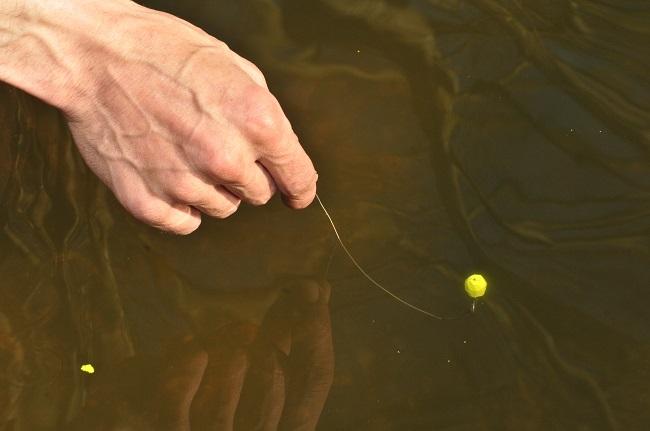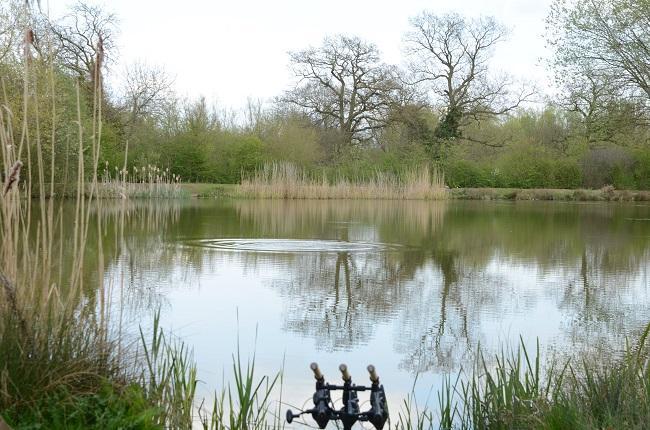Spring carp fishing can be as easy as our hobby gets. It can also be seriously frustrating, but if you get it right then you can have some of the best sport of the year. With lengthening days and new growth all around us, the carp are also becoming much more active at this time of year.
After a long winter as the water starts to warm, the carp will start to become more active. As cold blooded animals the weather really does dictate their habits and if you can predict what their habits will be, the odds are stacked in your favour. The other big factor to consider in the spring is their feeding preferences. This article helps you to understand how carp react to different weather conditions in the spring and the type of food and baiting strategy to adopt.
Keep your eyes on the water when spring carp fishing
No matter what time of year you are carp fishing, watercraft is essential and anglers who pay attention to the water and recognise even the subtlest signs of carp activity will always be one step ahead. Spring carp fishing is no different. As carp wake from their winter slumber and start to explore the lake, signs of carp activity may occur in more limited windows than it other times of the year so watercraft and watching the water is vital.
First light is always a good time to watch the water, but also during the hours of darkness, it can pay huge dividends to listen for the sounds of carp ‘boshing’ or rolling to pin point there whereabouts and understand their movements. During the day it can be a great time to get up trees and don your polarising glasses and just observe the carp’s movements before the heat of summer makes them lethargic.

Paying attention to water is critical to spring fishing success
When the sun is out fish shallower areas of the lake
As mentioned earlier, carp are cold blooded creatures and react to changes in weather, particularly temperature. When the sun is out there is a very good chance that carp in the spring will head for the shallower areas of the lake, which will warm up the fastest. Ensure you keep an eye on the weather so you know how the weather will change over the period you are fishing. If the forecast is for the sun to come out, then why not have your traps set in the shallower areas in advance, so as not to cause a disturbance by setting up on the fish once they arrive in the shallows.
As the sun goes down there is a good chance the carp will leave the shallower areas of the lake and head to deeper water. Remember, the shallower water reacts fastest to temperatures going up as well as down. If you listen during the hours of darkness it can really help build a picture of the carp’s habits over the course of the day and night. If you can figure out their patrol routes during certain conditions this will help you work out the optimal places set your traps and intercept the carp.
If during the day the sun isn’t out, which is very likely of course, then if there is no obviously place where the carp maybe to look, this is when your watercraft skills really come into play. Watch the water, look for signs such as head and shouldering, bubbling or clouded up water to help you locate where the carp are. Unless you are taking an educated guess based on previous knowledge of the lake it is always best to locate the carp to maximise your chances.

Keep an eye on the weather and fish shallower water when the sun is out
Bait selection and bait approach is key to spring carp fishing success
As the carp become more active, to sustain their activity, they require an increase in their intake of food. Finding exactly what the carp want to eat is probably the hardest part of spring fishing. If autumn is all about big beds of boilies to sustain the fish through winter, then spring is probably more associated with natural baits, singles and Zigs. Obviously, the majority of modern day-ticket carp will eat most baits all year round, but on less-pressured or low-stock waters you might find the fish to be quite picky in spring.

Don’t over bait when carp fishing in spring
Carp often feed on natural bait in spring so avoid using big beds of bait
Spring carp can be quite selective on the food items they eat. Particularly in early spring when the carp are just becoming active, their preferred source of nutrition is often natural food such as blood work beds and insect larvae.
Take advantage of hatching insects by experimenting with Zig Rigs. Spring is the best time to get fish taking suspended baits, and playing about with colours and shapes can turn good sessions into great ones.

Use zig rigs when insect hatches are occurring
On a cautionary note, it’s worth bearing in mind that, unlike summer, spring encompasses wildly different water temperatures, so don’t go in all guns blazing at the first sign of sunshine. It’ll take a while for the water to warm up, even if you’re in a T-shirt on the bank.
If you can locate fresh sources of natural food, like bloodworm beds, then you won’t be far off the fish at this time of year, and for the first time in a while you’ll be able to target the margins with carefully laid traps. Bright single hookbaits can be very effective as the carp can be drawn to them out of curiosity.

Bright coloured single hookbaits can be very effective in spring
Regularly baiting the same areas can pay dividends throughout the season
Spring also presents itself as an opportunity to put down foundations that will last you for months. By regularly baiting specific areas to keep weed growth at bay, you can cultivate a spot that will see you through the warmest months and beyond. It can even be worth trying this tactic in an unfancied swim, bringing the fish in on the strength of the bait while making sure you’re unlikely to find other anglers in the peg each week.





